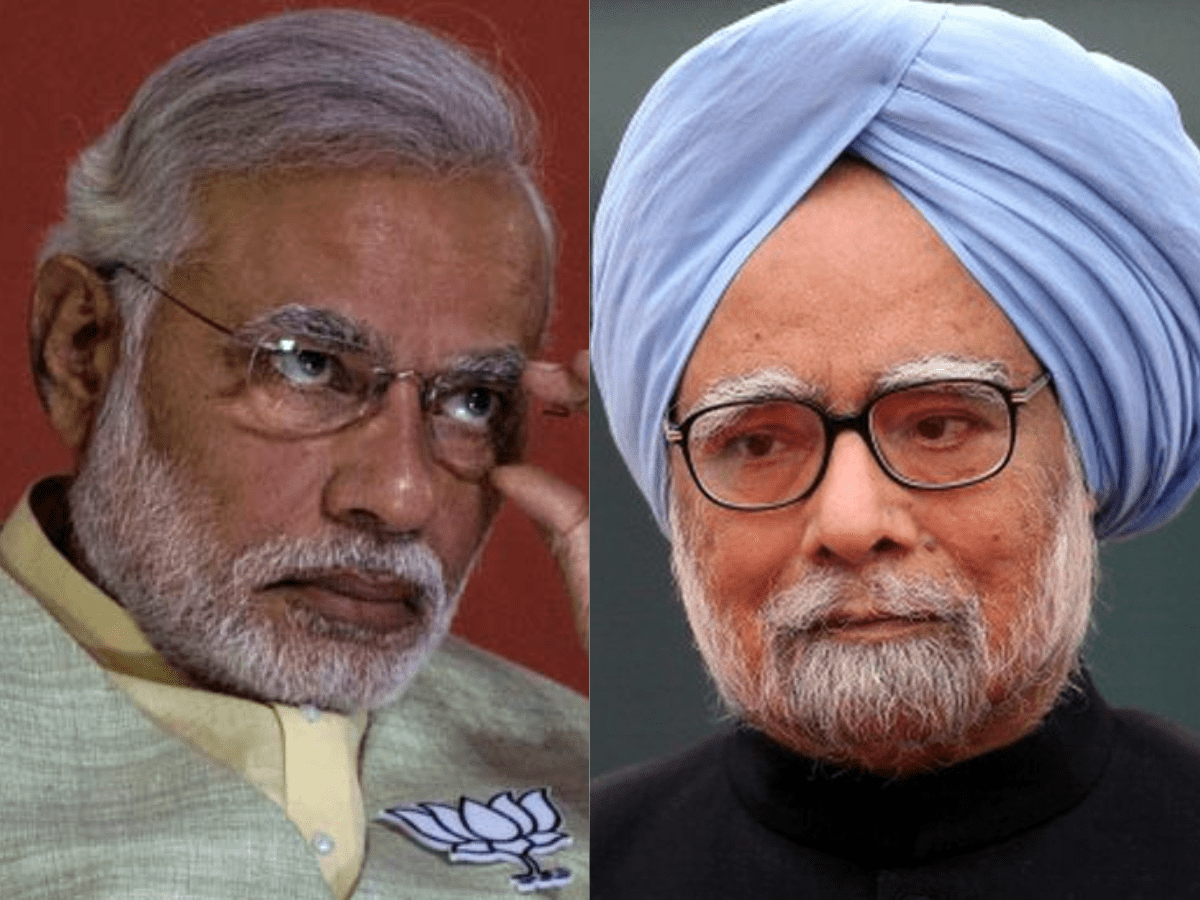
Industry and education are the two sectors in Bihar that received a setback in the last decade, though in five of these years, the state had the double-engine government of the Janata Dal (United) and Bharatiya Janata Party. This is in contrast to the previous 10 years between 2004 and 2014 when there were governments of different parties/alliances at the Centre and the state.
The irony is that whenever Chief Minister Nitish Kumar’s JD (U) joins hands with BJP he does not raise the demand for Special Category Status nor does he remind Prime Minister Narendra Modi about the tall promises of Rs 1,25,000 crore made for Bihar during the campaign of Assembly election in 2015. Nitish was then in the Grand Alliance.
Political competitiveness
Bihar definitely had a much better period during the 10 years of Manmohan Singh and even the previous tenure of Atal Bihari Vajpayee (1998-2004) at the Centre. This was largely because of the political competitiveness between the ruling alliance in Delhi and Patna.
It needs to be mentioned that Nitish raised the issue of Special Category Status during his first term (2005-10), when there was Manmohan Singh government at the Centre.
Though leaders of Rashtriya Janata Dal and Lok Janshakti Party were ministers in the Manmohan Singh government they did not oppose or stall any grant for Bihar. Bihar got a generous amount under the Backward Region Grant Fund, which was first introduced by the Manmohan Singh government in 2006. The state got Rs 8,753 crore during the 11th Five Year Plan (2007-12) and Rs 12,000 crore during the 12th Five Year Plan (2012-17). Nitish then expressed satisfaction over the allocation.
Be it Pradhan Mantri Gram Sadak Yojana, East-West Corridor and Golden Quadrilateral (whose work actually started during the Vajpayee era) or other National Highway projects and centrally-sponsored schemes Bihar got its due share. Lalu Prasad as the railway minister brought projects worth thousands of crores, which included Rail Wheel Plant in Saran district and electrical Locomotive factory in Madhepura.
As Union rural development minister (now late) Raghuvansh Prasad Singh showed enough generosity in granting funds for rural roads in Bihar. MNREGA was also introduced in that very period.
In the state, the Nitish Kumar government, in the initial years, took up some ambitious developmental works. Thanks to the competitiveness between Lalu and Nitish Bihar witnessed a high growth rate. Though it is also true that it was essentially a construction-driven boom and other sectors were ignored.
It is another thing that Nitish, with the help of the media, took away all the credit, though it is a fact that these developments would never have been achieved had the government in Delhi been hostile.
Educational achievements
This was the time when Central University of South Bihar came up in Gaya and Central University of North Bihar in Motihari as well as the off-campus branch of Aligarh Muslim University in Kishanganj.
The work for the revival of Nalanda University, the brainchild of then President A P J Abdul Kalam, got off to a good start with the appointment of Nobel Laureate Amartya Sen as the Chairman of the Mentor Group.
Nitish took initiative for acquiring land for this international university as it was coming up in his home district of Nalanda.
He took keen interest in opening Chandragupta Institute of Management, Patna, and Chanakya National Law University. Aryabhatta Knowledge University came up under which all the technical institutes were brought in.
The Indian Institute of Technology was established in Patna. Only the Indian Institute of Management in Bodh Gaya started functioning in 2015.
All these centres of learning were showing some promise when Narendra Modi took over as PM on May 26, 2014. Nalanda University became the first casualty of his rule, obviously because of the presence of Amartya Sen, who was critical of him when he was the chief
minister of Gujarat.
Curiously, as per the plan it started its academic year from 2014. But it remained a non-starter and a decade later it has, believe it or not, only 406 students and 45 faculty members—much less than any college in the remote corner of India.
Gradually Nitish too gave up as it is an international institution for which the Ministry of External Affairs is responsible.
Modi, while speaking on the occasion of the Centenary Celebration of Patna University in October 2017 turned down the demand of Central University status for it made by Nitish with folded hands. He was quite hopeful that PM would concede his demand as only on July 26 he had returned to the NDA fold. He reiterated this demand on the occasion of Teachers’ Day in 2023 when he was running the government in alliance with RJD and Congress.
Setback to industrialization efforts
The pace of industrialization which got a little boost during the first term of Nitish, thanks to the generosity of the UPA-I, slowed down in the later years, especially when Narendra Modi came to power.
The Sonalika Tractor which was inaugurated in Nitish’s first term wound up its industry within a year. The trips of Mukesh Ambani and Bill Gates to Bihar yielded no result. Industrialization failed to take off notwithstanding the development of road and rail infrastructure, and near total electrification of Bihar which actually took place before 2014 and for which the Manmohan Singh government too contributed a lot. The tall claim of a better law and order situation did not bring any big industry.
The only exception was liquor and beer firms which came up on the outskirts of Patna. The Nitish government on July 1, 2007, adopted a New Excise Policy under which liquor shops were opened in large numbers. The idea was to shore up the revenue of Bihar which suffered a huge loss after the hewing out of mineral-rich Jharkhand on November 15, 2000.
But on April 1, 2016, Nitish took a U-turn and implemented total prohibition. He was compelled to do so by a group of women self-help volunteers at a function in Patna on July 9, 2015. They complained that due to his liquor policy crime, in particular domestic violence, has increased manifold though the media was trying to present a rosy picture of Bihar. The cornered chief minister then promised that he would implement a total ban after he came to power in the Assembly election due later the same year.
All the liquor and beer companies, shops, and kiosks were suddenly shut down and violators thrown into jail—but not the big fish.
Instead of industrialization Bihar was rocked by Rs 500-crore liquor scam in 2010. When the then excise minister Jamshed Ashraf wrote a letter to Nitish highlighting the scam he was given a marching order in February 2010.
That was the peak time of Nitish’s popularity, and no one in the media was prepared to take a risk to raise this issue. A Hindi journalist who tried to highlight it was summarily transferred outside Bihar.
Unlike in pre-2014 years Nitish, during the present election campaign, does not take credit for the roads, bridges, and other construction works undertaken then. Contrary to this PM Modi—if he gets time from cursing all the Congress top brass from Jawaharlal Nehru to Rahul Gandhi—takes all the credit for whatever Bihar had achieved.
Nitish now does not dare to raise any genuine issue. For example, when he was in the Grand Alliance the entire BJP machinery would accuse him of not allotting land for the All India Institute of Medical Sciences in Darbhanga. Now, nobody in JD (U) and BJP is talking about it.

